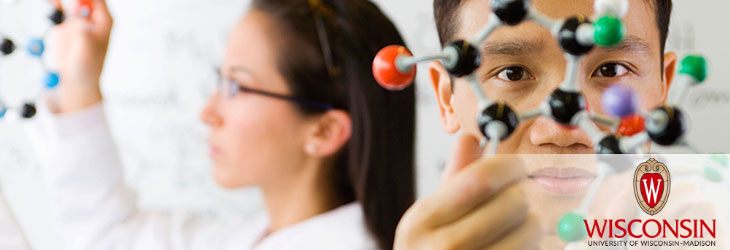Drug Discovery & Development

Novel Glycosyltransferases and Improved Methods of Creating Glycosylated Nucleotides for Drug Discovery
WARF: P100340US02
Inventors: Jon Thorson, Richard Gantt
The Wisconsin Alumni Research Foundation (WARF) is seeking commercial partners interested in developing a method of efficiently synthesizing novel nucleotide diphosphate sugars for use in research and drug discovery.
Overview
Many of the compounds used in drug discovery by pharmaceutical companies are glycosylated, bacterial secondary metabolites. A glycosylated metabolite consists of a central core structure (aglycon) and various sugar (glycosyl) attachments.
Because the sugar moieties of many of these metabolites define their biological activities, altering the carbohydrate ligands can lead to valuable new pharmaceuticals. A UW–Madison researcher previously developed a glycorandomization method for rapidly generating a diverse library of novel glycosylated compounds for use in drug discovery (see WARF reference number P04020US). In this method, at least one aglycon and a pool of nucleotide diphosphate (NDP)-sugars are incubated with a glycosyltransferase enzyme to produce glycorandomized structures.
However, a huge hurdle in the production of these compound libraries is the generation of the glycosylated nucleotides that serve as sugar donors. Synthesis of sugar nucleotides is expensive, difficult and time-consuming.
Because the sugar moieties of many of these metabolites define their biological activities, altering the carbohydrate ligands can lead to valuable new pharmaceuticals. A UW–Madison researcher previously developed a glycorandomization method for rapidly generating a diverse library of novel glycosylated compounds for use in drug discovery (see WARF reference number P04020US). In this method, at least one aglycon and a pool of nucleotide diphosphate (NDP)-sugars are incubated with a glycosyltransferase enzyme to produce glycorandomized structures.
However, a huge hurdle in the production of these compound libraries is the generation of the glycosylated nucleotides that serve as sugar donors. Synthesis of sugar nucleotides is expensive, difficult and time-consuming.
The Invention
UW–Madison researchers have developed novel glycosyltransferases and improved methods of synthesizing NDP-sugars. The methods exploit the reversibility of glycosyltransferases to rapidly generate exotic NDP-sugars. These nucleotides are a starting material in the generation of glycosylated drug compounds using the glycorandomization methodology.
The researchers discovered that in addition to transferring sugar groups from an NDP-sugar to another molecule, glycosyltransferases can catalyze the removal of sugars from glycosylated natural products and the transfer of a sugar from one natural product backbone to a different natural product backbone, thus allowing sugars and aglycons to be exchanged with ease.
The researchers discovered that in addition to transferring sugar groups from an NDP-sugar to another molecule, glycosyltransferases can catalyze the removal of sugars from glycosylated natural products and the transfer of a sugar from one natural product backbone to a different natural product backbone, thus allowing sugars and aglycons to be exchanged with ease.
Applications
- Preparation of NDP-sugar libraries for biochemical research and drug discovery
- Preparation of 13C labeled sugars for research
- Microscale glycosyl scanning to rapidly assess large compound libraries
Key Benefits
- Libraries of novel NDP-sugars can be prepared rapidly and efficiently.
Stage of Development
Milligram quantities of 22 fully characterized NDP-sugars were generated in a matter of hours.
Additional Information
Related Technologies
For current licensing status, please contact Rafael Diaz at [javascript protected email address] or 608-960-9847